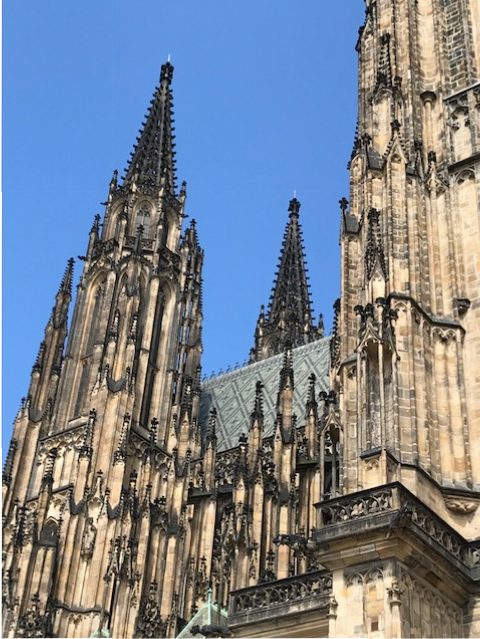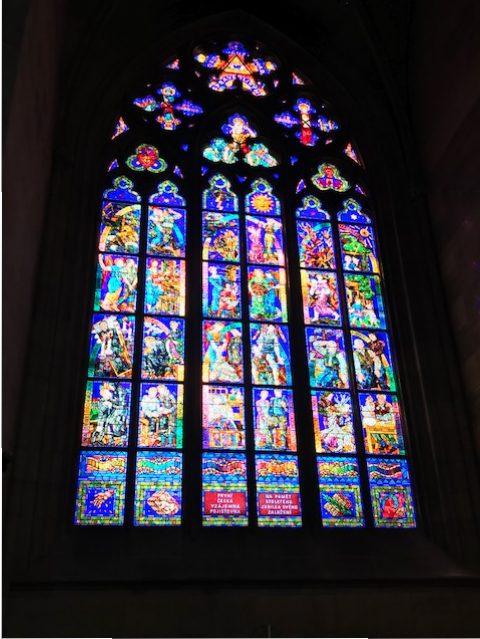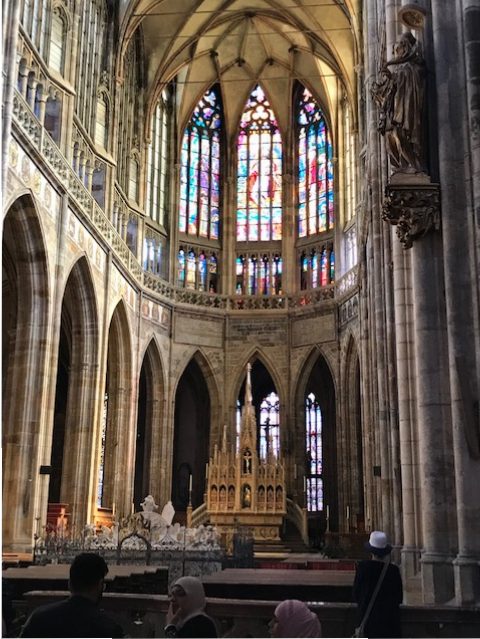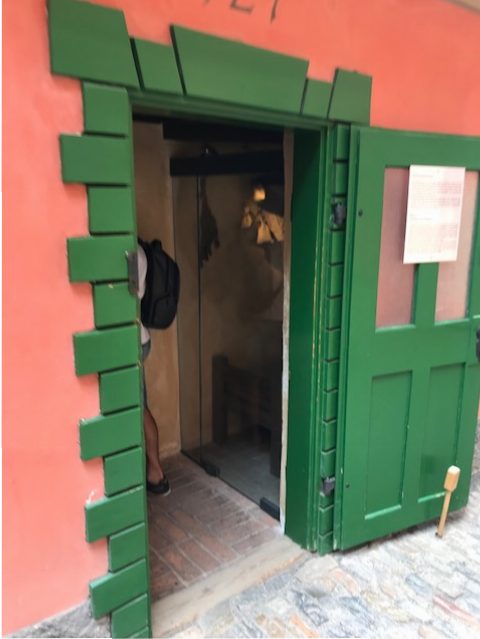On of the most unusual sites we visited in Prague was an old Jewish Cemetery in the Jewish Quarter in Old Town.
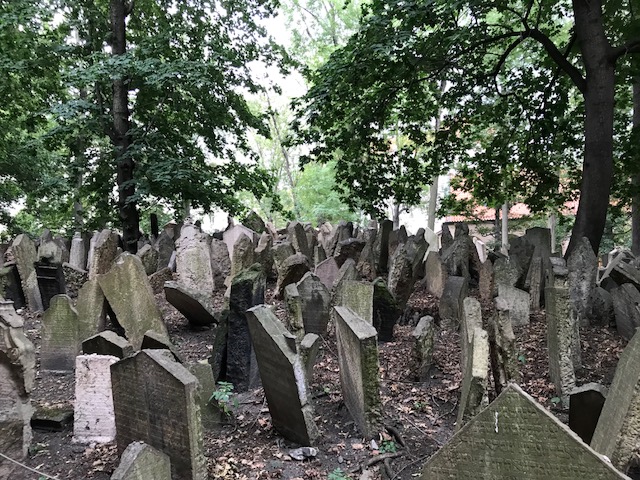
The land is only the size of one or two large city blocks, concealed behind a wall, but there are 12,000 tombstones crammed into this cemetery.
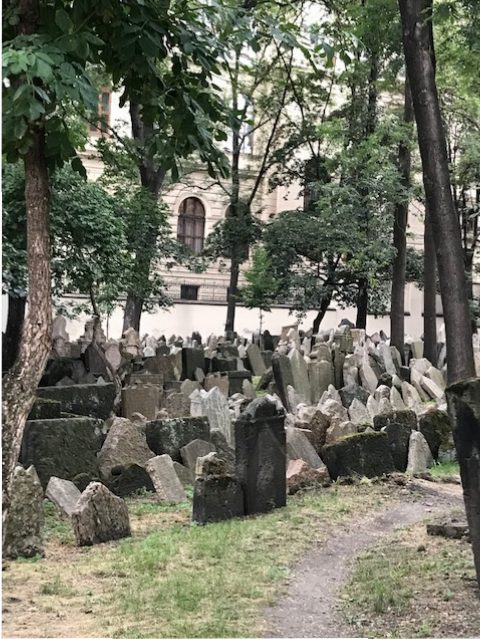
The oldest gravestone recorded dates from 1439 and the final gravestone is dated 1787, with many dates unknown. The inscriptions are mostly eroded and written in Hebrew. During this time the cemetery was the only place where the Jewish people of Prague were allowed to be buried. Because of this, it struggled with lack of space so they would add another layer of soil to add another burial…it is said there are as many as twelve layers in some areas and 85,000 people are buried in this small radius. The land inside actually became higher than the land outside of the enclosed cemetery because of adding layers of dirt. (Graves were never relocated because of Jewish belief that once buried a body should not be moved.)
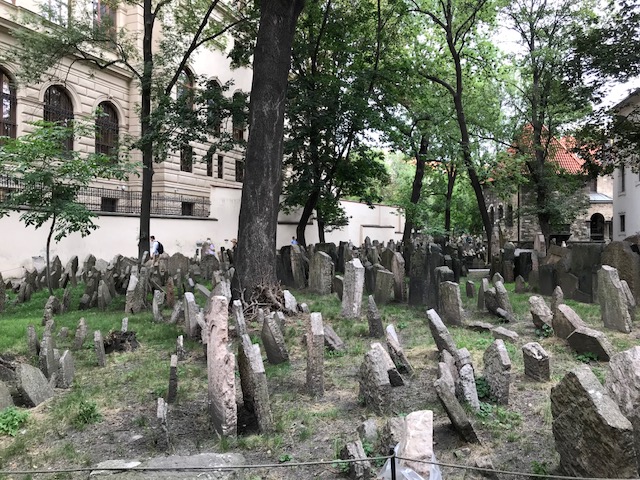
The tombstones are described as a “dense forest” of stones. They are crooked, leaning this way and that, and are piled right next to each other designating several people buried in several layers below.
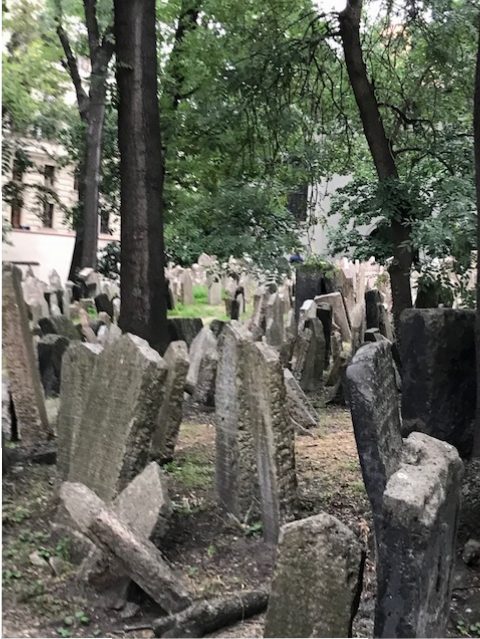
It’s hard to describe the feeling as we walked through the Old Jewish Cemetery. It was an impressive sight, yet melancholic as we reflected on the people buried in this cemetery, and those burying loved ones, layering one on top of one another.
Psalm 116:15 “Precious in the sight of the Lord is the death of his faithful ones.”

